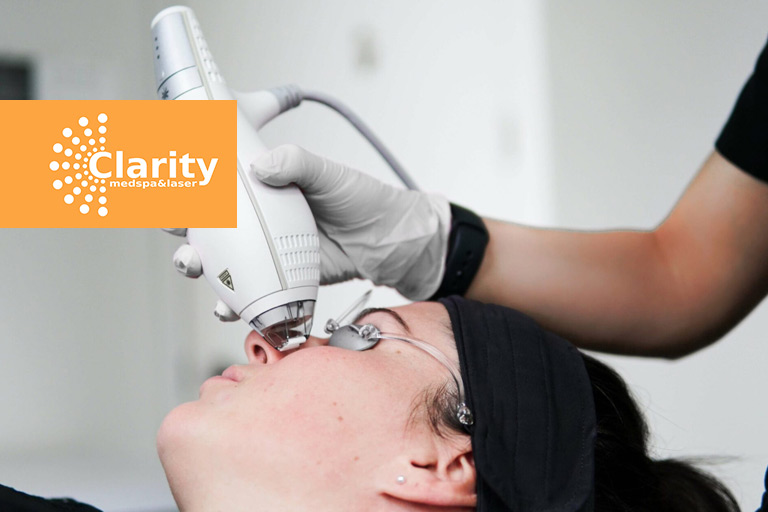How to Treat Hyperpigmentation, Scars, and Melasma
Uneven skin tone is a typical problem that many people experience. Regardless of your skin tone, dark spots and patches may develop on any part of the face or body that has experienced constant sun exposure or has had scarring. While this condition is completely normal, some people may find it annoying. As a result, many people seek medical attention to get clear, smooth skin.
If you are struggling with hyperpigmentation that has already affected your self-esteem, here is a list of essential information for melasma and hyperpigmentation treatment.
What Is Hyperpigmentation?
Hyperpigmentation is a general term for a range of skin conditions defined by the development of dark patches. This occurs when your body overproduces melanin, the natural pigment responsible for your skin colour. The pigmentation can be limited to a specific area like your hands or face, but it can also extend over larger surfaces.
Generally, hyperpigmentation is neither a life-threatening nor contagious condition. However, it can negatively a person’s self-image and self-esteem.
Common types of hyperpigmentation are:
- Melasma
Melasma, also known as chloasma, is characterized by the emergence of brown or greyish patches, which could typically be due to internal factors, such as hormonal fluctuations during pregnancy or thyroid issues. Melasma tends to worsen when the skin is exposed to the sun during the summer months and may show improvement during winter.
- Sunspots
As time passes, your skin is subjected to UV radiation, including the blue light from the sun and other sources, and its ability to control melanin production diminishes. As a result, an excess of melanin can form noticeable pigmented patches on the skin. These patches are typically observed on the face, hands, and chest and can manifest in individuals of all skin types.
- Post-Inflammatory Hyperpigmentation
This condition arises as a response to skin inflammation and is notably prevalent among individuals with darker skin tones. It frequently occurs as a result of conditions like acne and scarring and is commonly observed following facial procedures like laser treatments, especially among individuals with darker skin tones.
Causes of Melasma and Hyperpigmentation
- Drug Reaction
Some specific medications, like antimalarial drugs and tricyclic antidepressants, can potentially induce hyperpigmentation. In these cases, skin patches may develop on a grey hue. Additionally, certain chemicals found in topical treatments can, on occasion, lead to the development of hyperpigmentation.
- Medical Condition
Some more severe underlying factors contributing to hyperpigmentation include conditions like Addison’s disease and hemochromatosis.
Addison’s disease primarily impacts the adrenal glands. It can induce hyperpigmentation in specific bodily regions, including the creases of the skin, lips, elbows, knees, knuckles, toes, and even the inside of the cheek.
On the other hand, hemochromatosis is a hereditary disorder that results in an excessive accumulation of iron within the body. This condition can manifest as hyperpigmentation, causing the skin to take on a darker or tanned appearance. Typically, hyperpigmentation becomes noticeable when iron levels in the body reach levels approximately five times higher than the norm.
- Skin Inflammation
After patients experience skin inflammation, some areas of their skin may discolour. This can include acne, eczema, lupus, or an injury to the skin. Developing post-inflammatory hyperpigmentation is more likely in people with darker skin.
- Sun Exposure
To shield the skin from prolonged sun exposure, the body increases its production of melanin, which can result in the formation of dark spots or patches known as age spots or sun spots.
- Pregnancy
Melasma tends to have a higher incidence in women compared to men. It is predominantly observed in individuals with light to dark skin tones and might have a genetic predisposition.
The precise cause of melasma remains uncertain, although hormonal fluctuations, such as those occurring during pregnancy or due to contraceptive use, are potential triggers. Some refer to it as the “mask of pregnancy,” but it can also manifest in the abdominal area. Usually, melasma fades away following the conclusion of pregnancy or when discontinuing the use of birth control pills.
How Do You Get Rid of Hyperpigmentation and Melasma?
Upon the initial appearance of hyperpigmentation, it’s crucial to consult a medical professional for an accurate diagnosis since your symptoms may be attributed to a different underlying condition. Once identified, the treatment approach aims to reduce melanin production and eliminate areas with excessive pigmentation. It’s essential to approach hyperpigmentation treatment with a long-term perspective. Achieving noticeable results may take several weeks or even months.
- Chemical Peels
While applying a chemical peel might initially sound intimidating, this hyperpigmentation treatment is entirely safe and remarkably effective in addressing most types of skin discolouration.
During a chemical peel procedure, your healthcare provider administers a chemical solution that deeply exfoliates the skin, leading to the shedding of the epidermis. Essentially, this process eliminates dead skin cells, rejuvenates the skin, and unveils a brighter complexion lying beneath.
Following the treatment, your skin will naturally heal, resulting in a softer, smoother, and more uniformly toned appearance.
- Microneedling
Microneedling, or collagen induction therapy, is an exceptionally popular procedure that stimulates the body’s natural regenerative healing mechanism to address various skin issues, including hyperpigmentation and discolouration.
During a microneedling session, a provider utilizes a pen-like device equipped with small needles on its tip. These needles create tiny skin injuries, prompting the body’s innate healing response, which enhances the production of both collagen and elastin.
- Topicals
Over-the-counter (OTC) treatments, such as topical or lightening creams, utilize specific ingredients to reduce pigmentation. Many of these creams are also accessible in more potent prescription versions. Typically, they are applied once or twice daily to gradually lighten the skin. Gel-based topical treatments for skin lightening are also available.
Although they may not offer the same comprehensive results as procedures like chemical peels or microneedling, there are specific melasma and hyperpigmentation creams that could be equally effective in addressing and diminishing hyperpigmentation.
- Clear & Brilliant + Perméa
Clear & Brilliant is a non-ablative fractionated laser, often referred to as a “mini” laser, specifically designed to enhance skin quality by addressing issues such as tone, texture, and colour in just one treatment session. This laser treatment is suitable for individuals with all skin types, regardless of whether they have a tan.
The procedure utilizes two distinct wavelengths: Perméa (1927 nm), which primarily targets the surface layers of the skin, and Clear and Brilliant (1440 nm), which penetrates deeper into the skin. The choice between these wavelengths depends on your specific skin needs.
By making tiny openings under the skin’s surface, Clear & Brilliant® stimulates the skin’s innate healing and regenerative mechanisms, promoting the production of new skin cells and collagen.
- IPL Photo Facial Rejuvenation
Photo Facial Rejuvenation, commonly referred to as IPL (Intense Pulsed Light), is a treatment that can be administered in a single or multiple sessions, depending on the situation. This procedure involves the gentle application of pulsating light onto the skin, which is absorbed either by the colouration of the skin lesions or of the unwanted blood vessels and broken capillaries. Skin issues such as age spots, brown spots, and hyperpigmentation typically darken immediately before gradually fading over the following days. Veins and capillaries often respond immediately, although it could take a few days for them to heal completely.
Are you seeing spots and want to know how to remove pigmentation from your face permanently? Clarity Medspa & Laser offers hyperpigmentation and melasma treatments in Toronto you can trust. Schedule an appointment today at (416) 960-2222 and achieve that bright skin in no time.


 Linkedin
Linkedin Facebook
Facebook  Instagram
Instagram  Twitter
Twitter  Youtube
Youtube